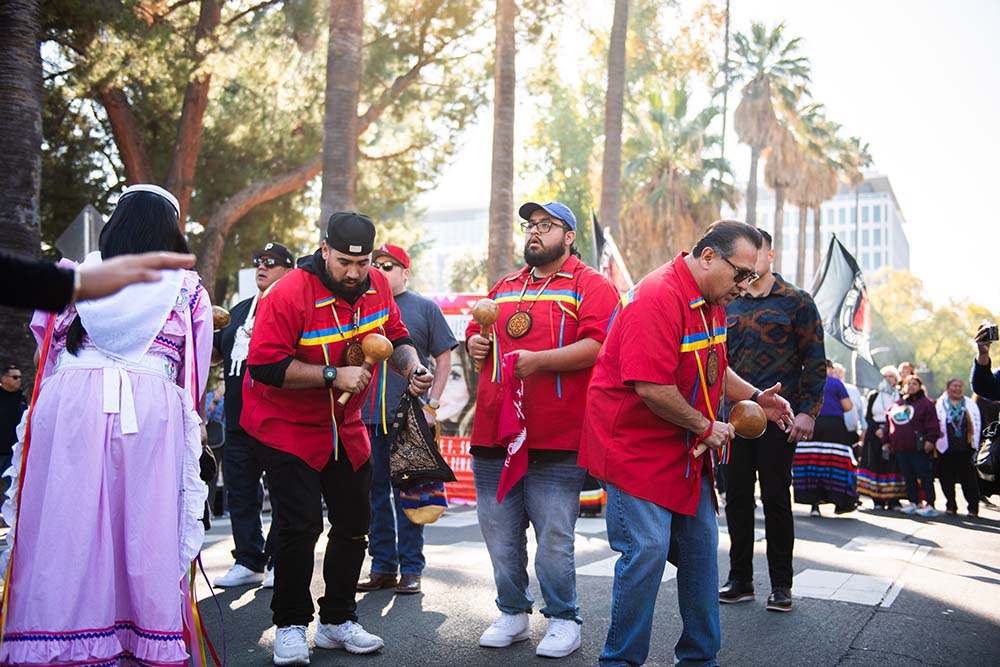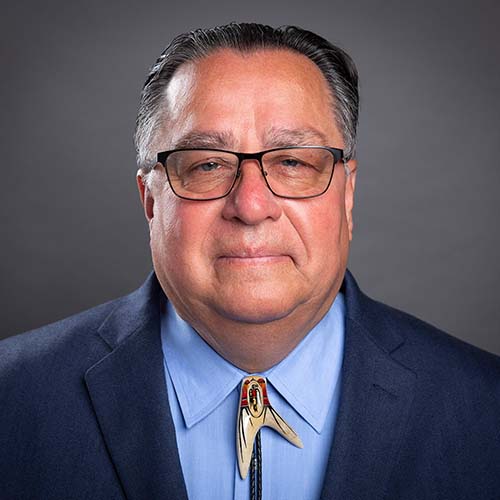
- Details
- By California Heritage Indian Collaborative Organization
California tribes, lawmakers prepare for wide array of colorful marchers & performers at 2nd Annual Native American Heritage Month parade down Sacramento’s Capitol Mall to West Steps
SACRAMENTO—Hundreds of participants and spectators will employ floats, horses, vehicles, walkers, performers, color guards, flags and marching bands during the Second Annual Native American Heritage Month parade down Capitol Mall starting at 10 a.m. on Sat., Nov. 8 and concluding with cultural performances on the Capitol’s West Steps. California tribes and the California Native American Legislative Caucus sponsor the event.
SATURDAY, NOV. 8 PARADE INFORMATION (as of Oct. 7; entrants still registering)
WHAT: Second Annual California Native American Parade in Sacramento during National Native American Heritage Month.
WHEN: Saturday, Nov. 8, from 10 a.m. to 3 p.m.
WHERE: Starts down Capitol Mall and ends at Capitol’s West Steps.
VISUALS: Floats, horses, vehicles, walkers, performers, color guards, flags and marching bands.
WHO: Assemblymember James C. Ramos, chair, California Legislative Native American Caucus and members including Assemblymembers Patrick Ahrens, Mike Gipson, and Avelino Valencia.
Emcees: Chairwoman Sara Dutschke, Ione Band of Miwok Indians, and Vice Chairwoman Raquel Williams, Wilton Rancheria.
Tribal parade participants include (partial list): Berry Creek Rancheria, California Valley Miwok Tribe, North Fork Rancheria of Mono Indians of California,
Cherokees of the Greater Central Valley; El Dorado Band of Miwok; Yuhaaviatam of San Manuel Nation; Cherokees of the West; El Dorado Band of Miwok and Cherokees of Northern Central Valley.
Native American organizations and agencies include: Governor’s Office of Tribal Affairs; Department of Health Care Services, Office of Tribal Affairs; CSU Office of Tribal Relations; C&C Smog (Native-owned Yaqui Wilton Community member); Center for Indigenous Law & Justice at UC Berkeley Law; American Indian Cultural Center of San Francisco; American Indian Cultural Center of San Francisco; Native Sisters Circle; Single Springs Tribal Temporary Assistance for Needy Families; University of Redlands, Native Student Program; Native Dads Network, Inc.; California Consortium for Urban Indian Health; California; Sacramento Area American Indian Education; Education Training Research, Native Health and Wellness; California Native Vote Project and Indigenous Hip Hop Business Association.
Other individuals and organizations: California Highway Patrol; Sacramento Lowrider Commission; California Department of Veterans Affairs; Varitech Systems and California Natural Resources Agency.
Nontribal Performers include: Tejon Indian Tribe White Wolf Warriors Color Guard and Grant High School Pacerettes.
Note: Parade entrants and others are continuing to confirm participation.
Help us defend tribal sovereignty.
At Native News Online, our mission is rooted in telling the stories that strengthen sovereignty and uplift Indigenous voices — not just at year’s end, but every single day.
Because of your generosity last year, we were able to keep our reporters on the ground in tribal communities, at national gatherings and in the halls of Congress — covering the issues that matter most to Indian Country: sovereignty, culture, education, health and economic opportunity.
That support sustained us through a tough year in 2025. Now, as we look to the year ahead, we need your help right now to ensure warrior journalism remains strong — reporting that defends tribal sovereignty, amplifies Native truth, and holds power accountable.
 The stakes couldn't be higher. Your support keeps Native voices heard, Native stories told and Native sovereignty defended.
The stakes couldn't be higher. Your support keeps Native voices heard, Native stories told and Native sovereignty defended.
Stand with Warrior Journalism today.
Levi Rickert (Potawatomi), Editor & Publisher
